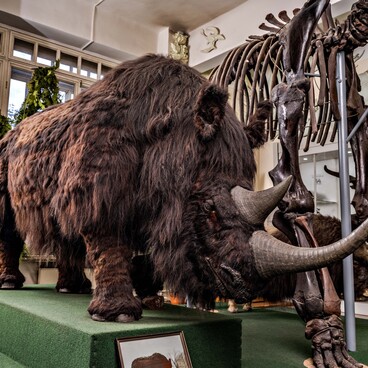One of the myths about Stone Age man is about their dwelling. Caves were rarely permanent shelters for a number of reasons: they were hard to find, often uninhabitable, and could become a trap for humans in case of another dweller appearing in the grotto — a lion or a bear.
No caves where Palaeolithic man could live have been found in Krasnoyarsk Krai so far. The most famous cave is the Denisova cave in Altai, where bone fossils of a separate species of Homo genus — Denisovan — were found. Neanderthals lived in the same cave, to be followed by Homo sapiens.
Archaeological findings confirm that people began to settle in the Polar region as early as 10,000 years ago. Surface dwellings were to protect people from bad weather: in the Stone Age, the climate in Siberia was even harsher than it is today. In the Krasnoyarsk area, winter temperatures dropped below 70 degrees Celsius.
Excavations of the Palaeolithic sites reveal locations of ancient fires, around which accumulations of large animal bones and massive stones or slabs are found within a radius of 3–5 meters. One of the first studied dwellings of ancient man on the territory of Siberia is located in Malta in the Irkutsk region. In 1928–1932 archaeologists discovered vertically embedded stone slabs — the ancient foundations of a house.
Krasnoyarsk is home to the Palaeolithic site of Afontova Gora, which was discovered in 1884. Excavations at other sites in Northern Eurasia made it possible to reconstruct houses that varied little across the continent. The model of a Palaeolithic dwelling exhibited in the museum is executed in a highly simplified form according to modern scientific ideas.
The foundation of the house of the Siberian ancient
stone man was circular or oval in shape. The house borders were marked by huge
stones or massive bones of large animals: mammoths, wooly rhinoceroses or
bison. Some dwellings had dozens of mammoth mandibles as foundations. The frame
of the house was built of wood, mammoths’ ribs or tusks. The walls of the
dwelling were lined with skins of large animals. One house could accommodate a
large family — up to 12 people.


